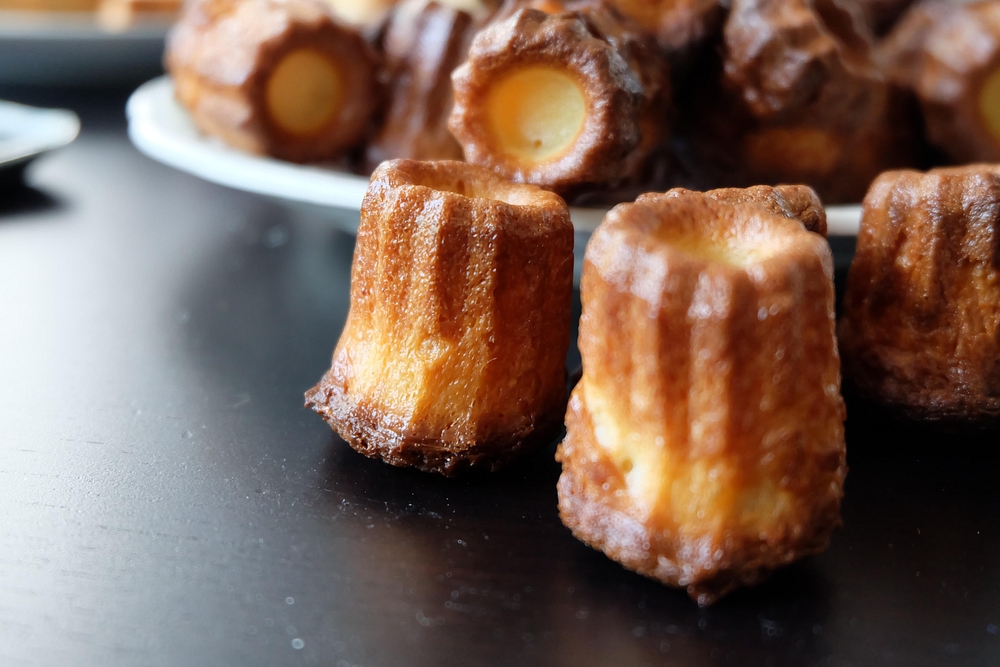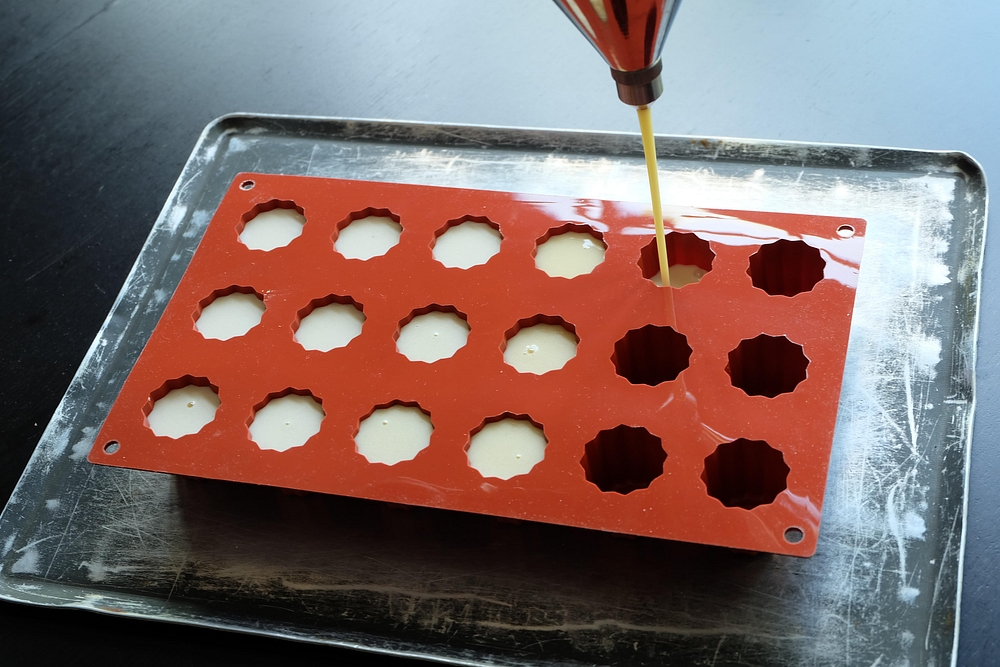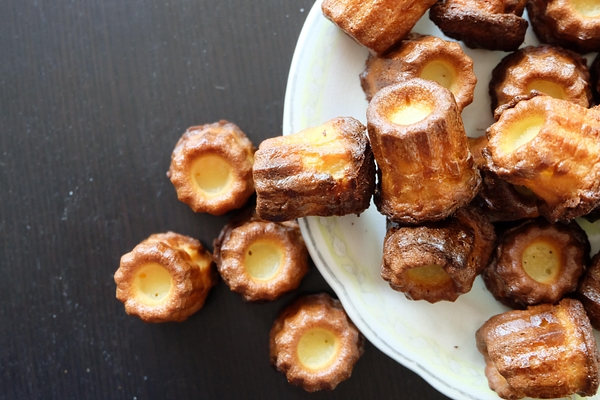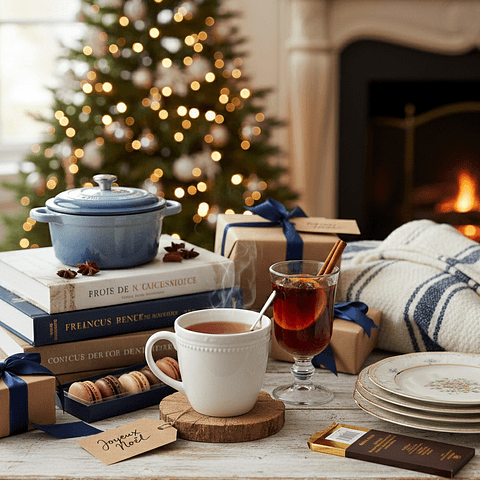Bordeaux may be a region famous for its wine - and rightly so - but the area also lays claim to another moreish treat. Canelé! A beautiful French pastry with a golden honey-coloured exterior and a custard-y texture inside, canelé may be small but they are also mighty - mighty tasty, in fact. That'll be thanks to the hints of vanilla and rum and the distinctive texture of the classic canelé, which is baked in a lovely fluted mold traditionally brushed with beeswax to give that caramelised texture. These days though, butter is usually used.
So how did canelé come about? What genius threw together the batter and cried a triumphant voilà! as they retrieved lovely golden canelés from the oven? Long story short? No-one knows. That doesn't mean there aren't a couple of theories flying around though!

©LaCuisineParis
As with so many delicious creations, one can often look to the holy folk of days-gone-by to find the roots of some of the greatest culinary gifts bestowed upon mankind. Cheeses, wines, beers, pastries - hundreds upon hundreds of monasteries across France (and across Europe) have provided the expertise and invention for recipes and products that are still much-loved today. Roquefort, Epoisses, Burgundy wines, Chartreuse, Champagne, beer...the list goes on. And it may include canelé. One theory goes that the treat was created by the Convent of the Annunciation in Bordeaux in the 15th century. Other theories suggest the the 18th century. Did we mention that no-one really knows? What we do know is that the word itself finds its roots in Gascon, the language spoken in Bordeaux and beyond until around the 19th century. That makes it an emblematic product of the Bordeaux region.
Mind Your Own Beeswax
Traditionally, the copper molds for canelé are coated in a mixture of melted butter and beeswax to give them that characteristic golden caramelised coating that holds in the soft, custard-like interior. You can find beeswax for this purpose at good health food store or online, ideally with no additives. It's an easy ratio of 50-50 butter to beeswax, so no complicated mathematics needed there! The best technique is to simply heat the mixture until melted, pour a little into the molds, swirl the mold to coat, and then immediately pour the extra mix back out into the original container. This will give a lovely thin layer - using a brush can actually hinder your progress as the mixture immediately hardens on the brush creating a bit of a mess! At this point, you can pop the molds into the fridge while you prepare the canelé mixture.
Cannelé or Canelé?
You say potato I say potato. Cannelé actually means "fluted" in French, which fits, given the lovely fluted copper molds that are a distinguishing feature of this particular little cake. Dropping the additional 'n' didn't happen until 1985, when a guild was set up that wanted to be instantly recognisable - so cannelé became canelé!
Where can I find the best canelé in Paris?
A very good question, and one that has been pondered before! Personally we love any chance to visit Stohrer, one of the oldest pastry shops in Paris nestled on the lovely rue Montorgueil - and as they serve canelé themselves, this provides the perfect excuse. That being said, some other top addresses to try out these traditional treats are listed below, so you'll never be too far from your next canelé pitstop!
La Boulangerie Thierry Marx, 17 bis, bld Haussmann
Mori Yoshida, 65 Avenue de Breteuil, 75007
Lemoine, 74 Rue Saint-Dominique, 75007
Aux deux Canelés, 72 Rue de la Verrerie, 75004
Fauchon, 30, place de la Madeleine

Did someone say Recipe? Ohhhh ok then! Since you asked so nicely. Let's bake these 15th-century.... 18th-century.... cannelés... canelés!!! We are so thrilled to be bringing you a genuine family recipe for Canelé direct from Bordeaux - thanks to our lovely Chef Ségolène!
Canelés can be tricky customers and practise makes perfect, so don't be disheartened if your results aren't perfect from the first try.
The mixture is best made ahead of time and left to rest in the fridge, covered. After 24 hours or even 48, the flavour is even better in your finished canelés, so don't skip this step! Be sure to stir the mixture before pouring into your molds.
Canelés
Serves: 18 - 20
300g of cake flour
100g of butter, melted
1 litre of milk
100g of sugar
1 vanilla bean
100ml rum
4 eggs
- Prepare the molds by greasing them well with butter if you are using a copper or metal mold, or ideally with a mixture of 50/50 butter and beeswax, melted. If you're using silicone molds, you don't need to grease them.
- Heat the oven to 210°C
- In a saucepan, bring the milk together with a split vanilla to a simmer.
- Mix together the eggs and sugar in a bowl. Add the melted butter and mix again.
- Remove the vanilla bean from the milk mixture. Add around 1/3 of the egg mixture to the milk mixture and stir, then add the flour. Mix until smooth, then, add the rest of the milk mixture and combine.
- Add the rum and mix.
- Refrigerate for up to 3 days.
- Pour the mixture into the prepared molds. Be sure to leave a gap around the top of around 1cm - this is important to prevent the tops of your canelé being white after baking once you turn them out, as well as the canelé spilling over during the baking process.
- Place in the oven for 10 minutes at 210°C, then reduce the temperature to 200°C and bake for a further 50 minutes.
- Remove the canelés from the molds while they are hot, then leave to cool a little.

